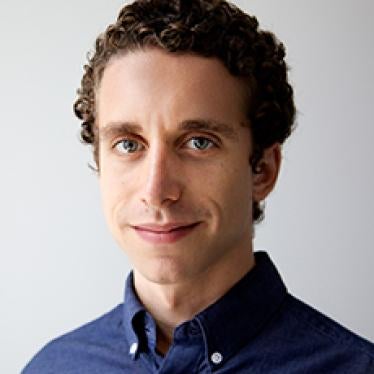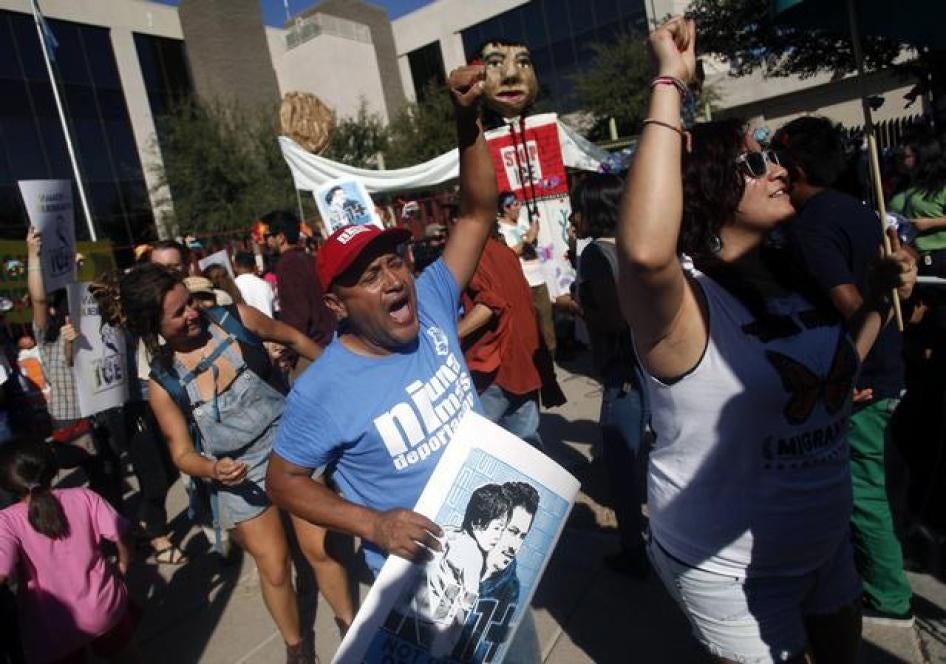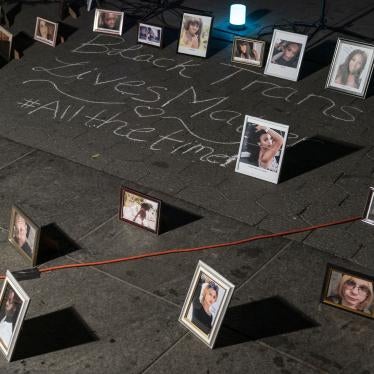“I have never been in jail before,” Natalia said, her voice trembling as tears fell slowly down the side of her face onto an orange jumpsuit. She explained that she had been raped by two men near the border in Tijuana only weeks before entering the United States to seek asylum. She had fled to the US after repeated sexual assaults in Mexico. She was being detained by Immigration and Customs Enforcement (ICE) at the Santa Ana City Jail in Southern California, in a segregated “housing pod” for gay men and transgender women.
“I said to God on the day I was raped in Tijuana, the only thing worse that could happen to me now is to end up in prison,” she said. “They treat us like we’re in prison—there are no human rights here.”
Thousands of legal permanent residents, asylum seekers and undocumented migrants like Natalia, whose name has been changed for her protection, are held in immigration detention today, locked up in nearly 250 jails and privately run detention centers across the United States. The experience can take a particularly severe psychological toll on women, children, and LGBT people, many of whom migrate to the United States in an attempt to escape violent persecution.
Adding to this trauma, transgender women like Natalia are often exposed to repeated verbal and sexual assaults in immigration detention by both officials and other people in detention. A 2013 independent congressional investigation found that transgender women accounted for one in five substantiated cases of sexual assault in ICE facilities.
Beyond this, transgender women are frequently denied access to health care, including hormone replacement therapy, and in certain rare instances, HIV medication. When they are not housed with men or kept in segregated pods such as the one at Santa Ana, they are typically held in prolonged solitary confinement—allegedly for their protection— which the United Nations says may amount to torture or other cruel and inhuman treatment.
Responding to increasing public demands to release transgender women from detention, ICE announced a new set of guidelines in late June. The policy takes the basic first step of allowing transgender women to choose whether they want to be housed in men’s or women’s facilities. However, there is no oversight mechanism to make sure that happens. It also calls for an increased use of “protective custody units,” or segregated housing pods, for transgender women.
Media reports indicate that ICE is considering opening one of these units on September 1 at the Adelanto Detention Center, a facility run by a private prison company that was recently criticized in a letter by more than two dozen members of Congress over its inadequate medical care. The move would also make it harder for transgender women to get legal assistance, as most attorneys specializing in LGBT asylum claims are based two hours away in Los Angeles or Santa Ana.
While ICE contends that these units “provide a safe, secure, and respectful environment,” researchers from Community Initiatives for Visiting Immigrants in Confinement (CIVIC) and Human Rights Watch found otherwise when they visited Santa Ana. A dozen transgender women who were either currently or recently in detention at Santa Ana described living in an environment of fear and intimidation. They alleged that staff repeatedly referred to them by the wrong gender, and that they had been subjected to full body cavity searches by male guards—without the option to choose a female officer—despite ICE’s own internal regulations saying they were to be allowed to make that decision for themselves.
The women Human Rights Watch interviewed at Santa Ana said that officials working in the unit imposed exceptionally harsh rules, locking them alone in their cells for seemingly baseless infractions, including not turning off a restroom light and lending a pencil to a cellmate. They said that they feared retaliation if they filed complaints with ICE. CIVIC has documented similar accounts since 2012, including a lack of access to continued medical care and excessive use of solitary confinement
Even in “protective” units, transgender women face harassment and neglect of their health needs and other concerns. We believe this will be especially true at Adelanto, where CIVIC and others have documented extreme cases of medical neglect, and where transgender women will be isolated from essential legal and community support. Instead of locking up this relatively small but uniquely vulnerable population, ICE should work with nongovernmental organizations to expand community-based supervision and other alternatives so that transgender women can pursue their immigration cases without being exposed to violent abuse and inhumane treatment in detention.
Adam Frankel is a researcher in the LGBT rights program at Human Rights Watch. Christina Fialho is an attorney and the co-executive director of CIVIC.









